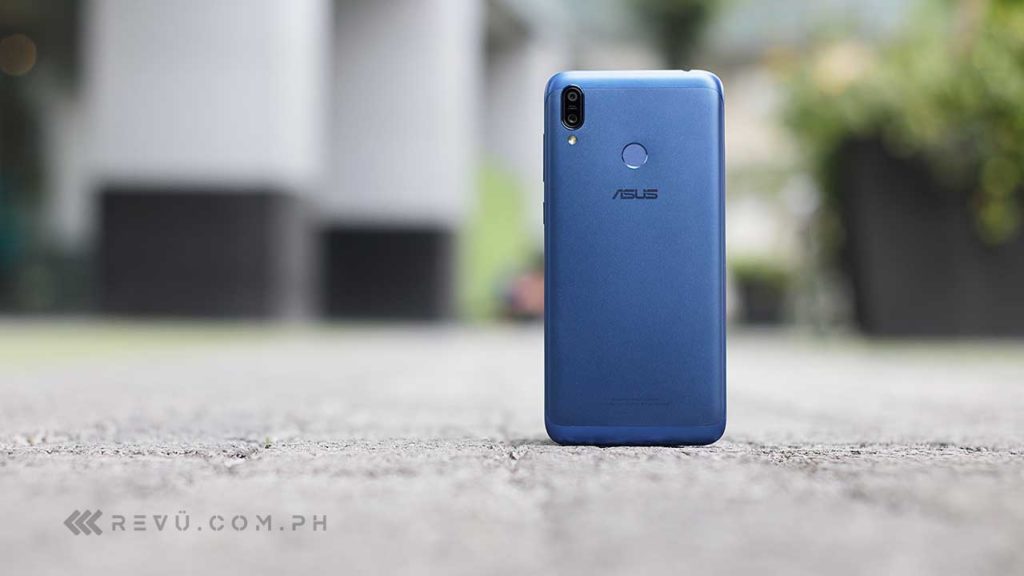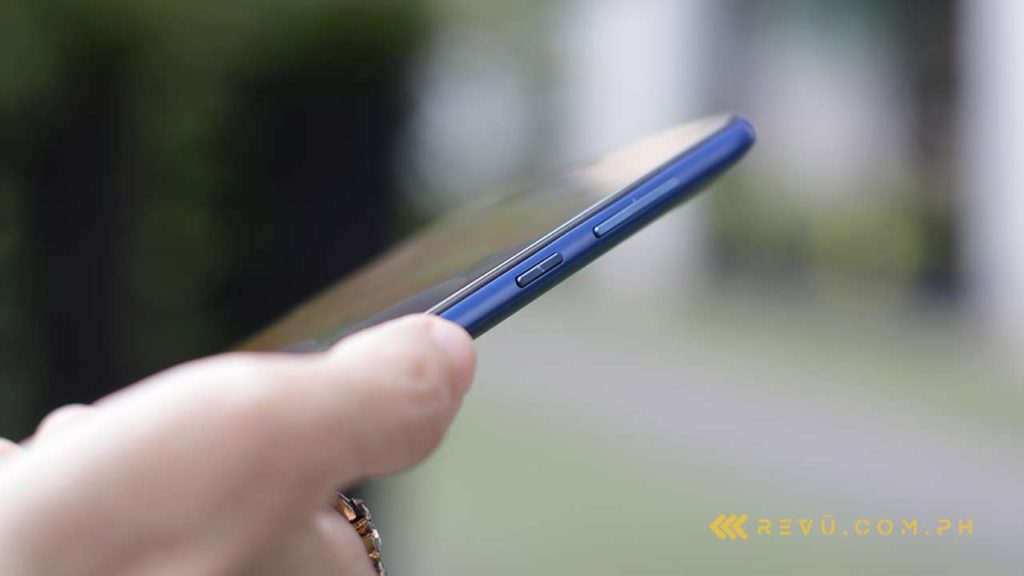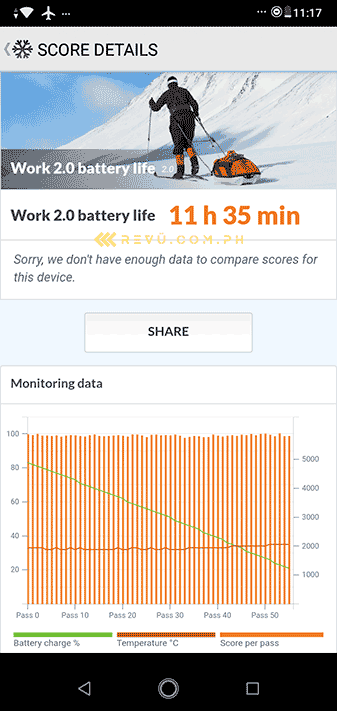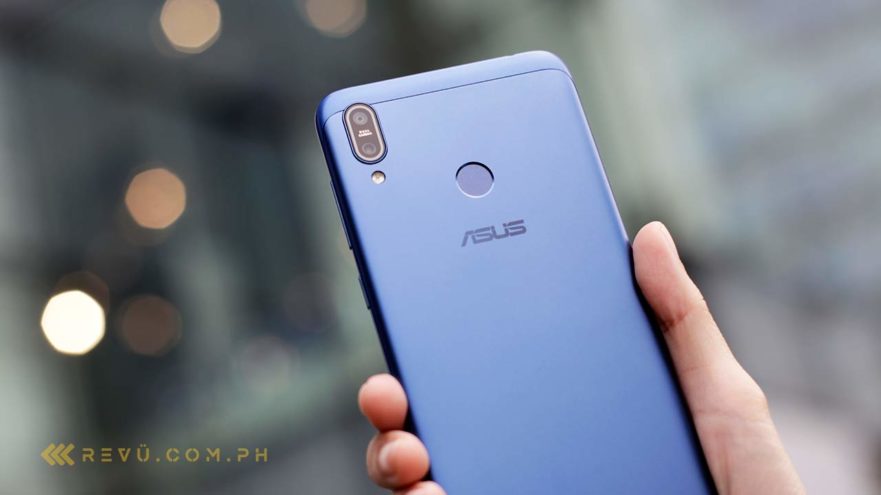ASUS dropped a big reveal on the market this month when it announced the ZenFone Max M2 in the Philippines.
The watered-down version of the ASUS ZenFone Max Pro M2 is already offered at local retail for a price of P8,995 or the equivalent of $172 for the base configuration with 3GB of RAM and 32GB of internal storage. Your choice of colors are black and blue.
SEE ALSO: ZenFone Max M2 priced. Here’s how it compares with the ASUS Max Pro M2
Built from a metal unibody with discrete antenna lines that trace the edges of the top and bottom of the device, it’s got a premium vibe to it. Plus, the matte finish feels great in the hand even though it doesn’t do much to improve grip and prevent slipping.

The ASUS ZenFone Max M2 looks a lot like last year’s ZenFone Max Pro M1
Visually, the ASUS ZenFone Max M2 looks a lot like the ZenFone Max Pro M1 from last year. But the latter doesn’t have a display notch to minimize the top bezel while providing a place for hardware like an earpiece and a selfie camera.
Despite its size, we personally don’t mind the cutout on the smartphone, to be honest. It doesn’t get in the way of everyday use much, especially after you set a black wallpaper on the home screen. Though we wish ASUS had added the option to hide it via software, which would make this device more appealing to the notch-averse out there.

We don’t mind the cutout on the ZenFone Max M2, though we wish ASUS had added the option to hide it via software
Not too tall nor too wide, the ASUS ZenFone Max M2 sits in the palm quite nicely, and one-handed usage isn’t particularly a problem. The physical buttons on the right side are clicky and tactile, even through the clear TPU case that comes bundled with the phone.
In our time with it, we thought the placement of the buttons was fine. We also liked that the company added texture to the power button to make it feel immediately different and much easier to find and access.

We like that ASUS added texture to the ZenFone Max M2’s power button to make it feel immediately different and much easier to find and access
The microUSB charging port and single downward-firing speaker are located at the base of the ZenFone Max M2, while the headphone jack, which many manufacturers do away with these days, is at the top of the phone. The sound output from the built-in speaker is decent but doesn’t get very loud.
Moving to the back, there’s a conventional fingerprint scanner that isn’t difficult to locate and works reasonably well, most of the time at least. Facial recognition is also available, but it doesn’t unlock the handset with the accuracy of a biometric sensor.
READ ALSO: ASUS ZenFone Max Pro M2 review: Max power, max battery life
There’s a 6.26-inch LCD screen on the front that throws images at a resolution of 1,520 x 720. Additionally, it has a 19:9 aspect ratio, meaning the screen is taller than usual and therefore suited for watching videos and gaming.
The display is actually decent for a phone in this price point if you aren’t picky about its performance. Colors look pretty accurate out of the box, though there’s clearly room for improvement in a couple of areas like saturation. It doesn’t get bright enough for outdoor use either. And the lower resolution means some fine details look a bit pixelated.

The ASUS ZenFone Max M2’s screen is decent for a phone in this price point
Of course, these nitpicks do fall away when you think about the ASUS ZenFone Max M2’s intended market, and they don’t derail the general enjoyment of consuming content on this screen.
Located on the upper-left side of the back of the unit are two cameras. The 13-megapixel main camera is accompanied by a 2-megapixel depth sensor for portrait and bokeh shots. The phone’s native camera app allows you to adjust the strength of the depth effect that you want in your picture; just don’t overdo it.
SEE ALSO: ASUS ZenFone Max Pro M1 review: Pro performance on a budget
Another thing to point out: ASUS’ PixelMaster camera app isn’t preloaded on the system, so the available options and shooting modes are a bit lacking. Staples such as Panorama and HDR are missing from the menu, but (thankfully) Beauty mode is available for users who love snapping clean selfies for social media.
Speaking of which, the front-facing camera houses an 8-megapixel sensor behind an f/2.0 lens. It is relatively quick to focus and can detect your face in any orientation, too. Based on our testing, it performs adequately enough in most circumstances yet struggles in low light, like most other selfie cameras.
[sciba leftsrc=”https://www.revu.com.ph/wp-content/uploads/2019/02/ASUS-ZenFone-Max-M2-sample-selfie-picture-camera-review-Revu-Philippines.jpg” leftlabel=”Indoors” rightsrc=”https://www.revu.com.ph/wp-content/uploads/2019/02/ASUS-ZenFone-Max-M2-sample-selfie-picture-camera-review-Revu-Philippines-a.jpg” rightlabel=”Outdoors” mode=”horizontal” width=””]Selfies: Indoors vs outdoors
Looking at our sample photos closely, though, we think ASUS could have spent more time improving the cameras on the ZenFone Max M2. There are a lot of competing devices in this space — many from big-name manufacturers, actually — and a good number of them are capable of producing better results with greater consistency than this ZenFone.
[sciba leftsrc=”https://www.revu.com.ph/wp-content/uploads/2019/02/ASUS-ZenFone-Max-M2-sample-picture-auto-camera-review-Revu-Philippines.jpg” leftlabel=”Auto mode” rightsrc=”https://www.revu.com.ph/wp-content/uploads/2019/02/ASUS-ZenFone-Max-M2-sample-picture-portrait-bokeh-camera-review-Revu-Philippines.jpg” rightlabel=”Portrait mode” mode=”horizontal” width=””]Auto mode vs Portrait mode (with bokeh effect)
More pictures shot on the ASUS ZenFone Max M2
Anyway, on to a more important spec. Our unit runs near-stock Android 8.1 Oreo on a 14nm Qualcomm Snapdragon 632 processor with up to 4GB RAM and 64GB of expandable storage. The base configuration (the unit we used for this review) has 3GB RAM and 32GB storage.
ASUS says the Snapdragon 632 is 40 percent faster compared to its predecessor, the Snapdragon 626, which performs similarly to the Snapdragon 625 featured in older devices. We’re not sure if that’s accurate, but the eye test doesn’t do the Snapdragon 632 any favors.

ASUS ZenFone Max M2 Antutu and Geekbench benchmark scores
We do know it’s much slower than the Snapdragon 636 inside the ZenFone Max Pro M1 and various others. The results of performance benchmarks corroborate our observations. Also: Gaming isn’t one of its strong points — or at least it isn’t if you play a lot of graphically intensive modern games. PUBG Mobile is playable at low detail, but then again, plenty of other smartphones can do the same thing for cheaper or at the same price.
Gaming on the ASUS ZenFone Max M2 (PUBG Mobile; NBA 2K19 at the 4:56 mark)
The base ZenFone Max Pro M1 boasts better specs all around, also runs vanilla Android, and can be picked up for P8,995 ($172) currently, just like the ASUS ZenFone Max M2.
Long battery life is pretty much the calling card of every model under the ZenFone Max series; the Max M2 is no different. We regularly managed close to two days of normal use before having to recharge the 4,000mAh battery.
We regularly managed close to two days of normal use before having to recharge the ASUS ZenFone Max M2’s 4,000mAh battery.
Even for heavy users, we suspect it should be good enough to get you through your nine-to-five without compromise. Charging takes around two hours with the bundled 10-watt power brick, so downtime with this device should be minimal.

PCMark battery-test result for the ASUS ZenFone Max M2
Final thoughts
ASUS did a solid job with the ZenFone Max M2, delivering an updated design that feels nice to the touch, decent specs for the price, and long-lasting usage on a single charge. However, it falls short of dethroning the company’s current value-for-money champ, the ZenFone Max Pro M1 with 3GB RAM, which is still listed on the market for exactly the same price as the ZenFone Max M2.

ASUS did a solid job with the ZenFone Max M2
ASUS ZenFone Max M2 specs
- 6.26-inch LCD display, 1,520 x 720 resolution
- Octa-core Qualcomm Snapdragon 632 processor
- 3GB RAM
- 32GB expandable storage (via dedicated microSD card slot)
- Dual 13- and 2-megapixel rear cameras with LED flash
- 8-megapixel front camera
- Fingerprint sensor (rear-mounted)
- 4,000mAh battery
- Android 8.1 Oreo
Share this Post

















